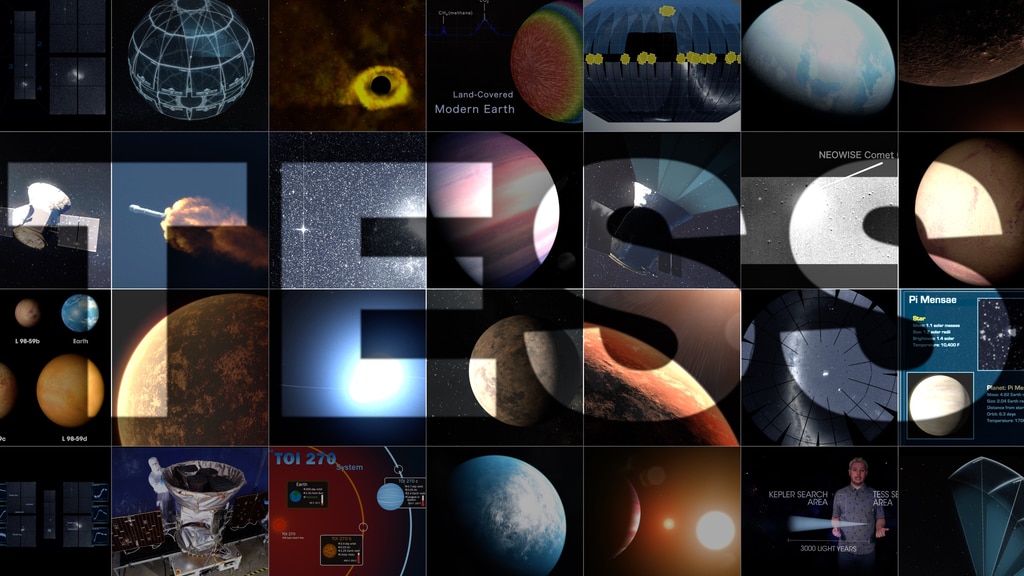TESS Discovers Its Tiniest World To Date
NASA’s Transiting Exoplanet Survey Satellite has confirmed the tiniest planet in its catalog so far — one of three discovered around a bright, nearby star called L 98-59. As shown in the illustrations in this video, all could occupy the “Venus zone,” the range of distances from the star where a Venus-like atmosphere is possible. The outermost planet also has the potential for a Neptune-like atmosphere.
Credit: NASA’s Goddard Space Flight Center
Music: "Autumn Rush" from Killer Tracks
Complete transcript available.
Watch this video on the NASA Goddard YouTube channel.
NASA’s Transiting Exoplanet Survey Satellite (TESS) has discovered a world between the sizes of Mars and Earth orbiting a bright, cool, nearby star. The planet, called L 98-59b, marks the smallest found by TESS yet.
Two other worlds orbit the same star. While all three planets’ sizes are known, further study with other telescopes will be needed to determine if they have atmospheres and, if so, which gases are present. The L 98-59 worlds nearly double the number of small exoplanets — that is, planets beyond our solar system — that have the best potential for this kind of follow-up.
L 98-59b is around 80% Earth’s size and about 10% smaller than the previous record holder discovered by TESS. Its host star, L 98-59, is an M dwarf about one-third the mass of the Sun and lies about 35 light-years away in the southern constellation Volans. While L 98-59b is a record for TESS, even smaller planets have been discovered in data collected by NASA’s Kepler satellite, including Kepler-37b, which is only 20% larger than the Moon.
The two other worlds in the system, L 98-59c and L 98-59d, are respectively around 1.4 and 1.6 times Earth’s size. All three were discovered by TESS using transits, periodic dips in the star’s brightness caused when each planet passes in front of it.

The three planets discovered in the L98-59 system by NASA’s Transiting Exoplanet Survey Satellite are compared to Mars and Earth in order of increasing size in this illustration.
Credit: NASA’s Goddard Space Flight Center

Square version of the above.
Illustration depicting a 360-degree rotation of L 98-59b. A 4K still image is also available for download.
Illustration depicting a 360-degree rotation of L 98-59c. A 4K still image is also available for download.
Illustration depicting a 360-degree rotation of L 98-59d. A 4K still image is also available for download.
L 98-59b, a planet discovered in the L98-59 system by NASA’s Transiting Exoplanet Survey Satellite, is compared to Mars and Earth in order of increasing size in this illustration.
L 98-59c and L 98-59d, two planets discovered in the L98-59 system by NASA’s Transiting Exoplanet Survey Satellite, are compared to Earth in order of increasing size in this illustration.
Illustration depicting the L 98-59 system.
Illustration depicting how much radiation bombards each planet in the L 98-59 system, as multiples of the amount of radiation Earth receives from the Sun.
Unlabeled version of the above.
Credits
Please give credit for this item to:
NASA's Goddard Space Flight Center
-
Producer
- Chris Smith (USRA)
-
Science writer
- Jeanette Kazmierczak (University of Maryland College Park)
-
Animator
- Chris Smith (USRA)
Release date
This page was originally published on Thursday, June 27, 2019.
This page was last updated on Wednesday, May 3, 2023 at 1:45 PM EDT.

